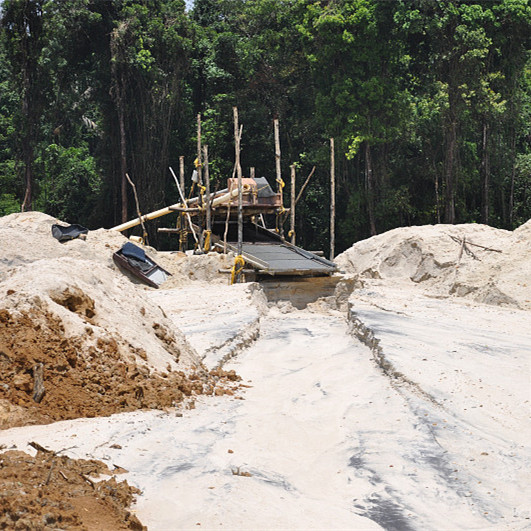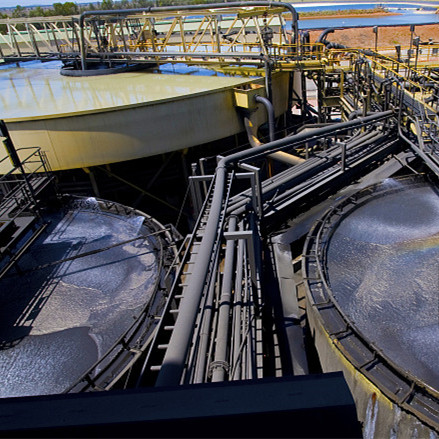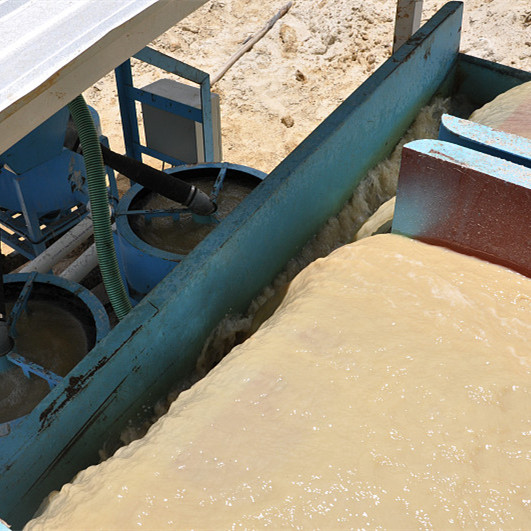Flotation is one of the main methods of beneficiation of graphite ore. Purification can make the grade of graphite reach 80-90%, or even about 95%. The key points of the process include the flotation process and flotation reagents. In this paper, we will focus on these two aspects of graphite ore flotation.
1. Graphite ore flotation process
The flotation method is mainly based on the difference in wettability between graphite and gangue mineral surfaces. Due to the good hydrophobicity of graphite, it will adhere to and float on the air bubbles, while the hydrophilic gangue remains in the water. And then realize flotation separation. Its flotation process mainly includes three parts: ore preparation, slurry adjustment and grinding and flotation process.
1.1. Graphite mine preparation process
The graphite ore preparation process may include: mineral crushing, ore grinding, grading and other links.
Crushing: It mainly relies on mechanical crushing through extrusion, impact, splitting and grinding to achieve the initial dissociation of graphite and gangue minerals. The hardness of graphite ore is generally medium-hard or medium-hard to soft, and the grade of raw ore is between 2 and 10%. Mines can be directly ground without crushing. Jaw crushers are often used for coarse crushing of large-sized minerals; hammer crushers and impact crushers are used for secondary crushing of minerals, and cone crushers and roller crushers are used for fine crushing of minerals.
Grinding: This stage is to further realize the dissociation of graphite monomer or continuous body after crushing. In order to select large flake graphite as soon as possible, a multi-stage grinding process is often used in the grinding stage, and the separation is completed in conjunction with flotation. At this stage, ball mills, rod mills, and stirring mills are often used as grinding equipment.
Classification: Generally, it is combined with ore grinding to form a grinding and classification operation. After grinding, it is qualified and mixed into the classifier equipment, and the solid particles are separated according to the size of the particle size, so as to separate the qualified particle size products in time. Graphite classification is commonly used as a classification equipment with a spiral classifier.
1.2. Graphite mixing process
Slurry mixing is an important process in the process of mineral purification and separation, which can make preparations for subsequent separation operations. Generally, by adjusting the pulp concentration, the agent is dispersed and fully contacted with graphite minerals.
The pulping operation of graphite ore concentrator can be divided into conventional pulping, aerated pulping and graded pulping, and then mechanical stirring, jet mixing and static mixing are carried out to complete the pulping. It is mainly completed in equipment such as mixing tank, pulp preprocessor and pulp preparer.
1.3. Graphite flotation process
According to the different types of graphite, the graphite flotation process is also different. The conventional flotation process is generally a closed-circuit process of multi-stage flotation-medium ore sequential return or concentrated return. When the grinding operation of each stage is completed, it enters the flotation stage. For example, after the first stage of grinding operation (the ore particle size reaches about 40% of -200 mesh), a stage of flotation is carried out, followed by multiple stages of grinding and stripping, and multiple separations; Ore return means that the medium ore produced after flotation is returned sequentially or concentrated to the previous level of operation to improve the flotation efficiency of graphite ore.
The overflow ball mill is commonly used for fine grinding, roughing and sweeping, and the XJK flotation machine is used for fine selection.



2. Graphite ore flotation agent
In the actual beneficiation operation, in addition to selecting a suitable flotation process, the choice of reagents is also particularly important. By adding reagents, the hydrophobicity of graphite can be improved to improve the effective separation of graphite and gangue minerals. At present, common graphite ore flotation reagents are mainly collectors, foaming agents and regulators.
2.1. Collector
Graphite itself has a certain degree of buoyancy, and graphite concentrate can also be flotation without using collectors, but the flotation efficiency is not ideal. A thin layer of oil film enhances its hydrophobicity and makes it firmly attached to the air bubbles, thereby improving the floatability of graphite and improving the recovery rate of concentrate. Common graphite ore flotation agents mainly include: kerosene, diesel oil, liquid paraffin, heavy oil and other hydrocarbon oils.
2.2. Foaming agent
Foaming agents are composed of polar and non-polar group molecules, where the polar group is hydrophilic and the non-polar group is hydrophobic. By adding a foaming agent, the mechanical strength of the bubbles can be increased, and at the same time, the number and size of the bubbles can be controlled, the speed of the bubbles rising, and the distribution state of the bubbles can be changed. Foaming agents commonly used in graphite mines include 2# oil, 4# oil, pine oil, cresylic acid and camphor oil.
2.3. Regulator
The purpose of the regulator is to adjust the effect of collectors and minerals, to suppress or strengthen the hydrophobicity of minerals. According to their different functions, they can be divided into three types: pH adjuster, inhibitor and dispersant.
pH adjuster: Commonly used are lime (CaO), NaCO3, Na(OH)2;
Inhibitors: mainly water glass, sodium carboxymethyl cellulose, EDTA, tartaric acid, citric acid, oxalic acid, etc.;
Dispersant: mainly water glass, sodium hexametaphosphate, sodium polyacrylate, etc.
The above content is the introduction of the conventional flotation process and flotation reagents of graphite ore. In the actual concentrator, it should not be selected blindly. Graphite ore beneficiation efficiency, to obtain the ideal recovery rate.